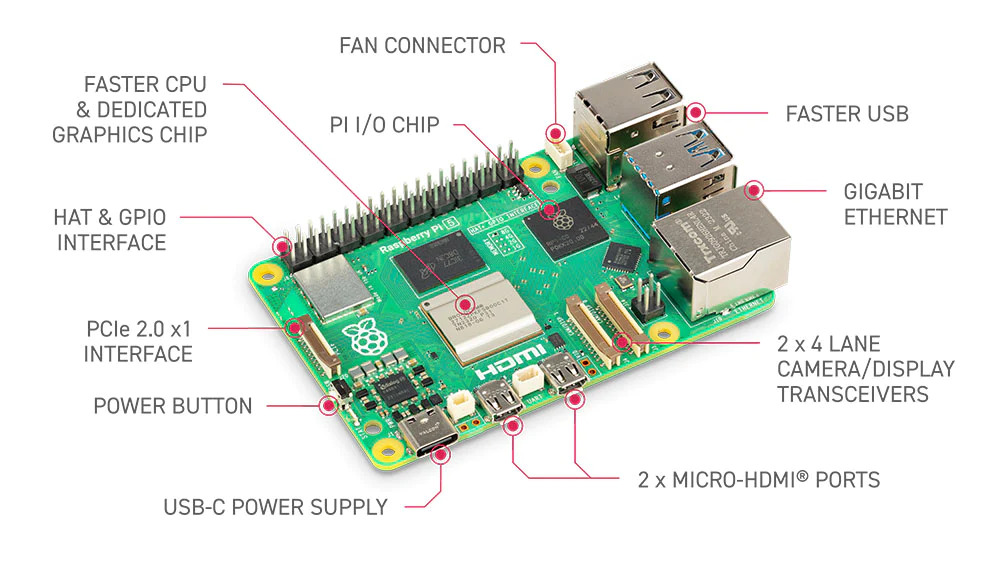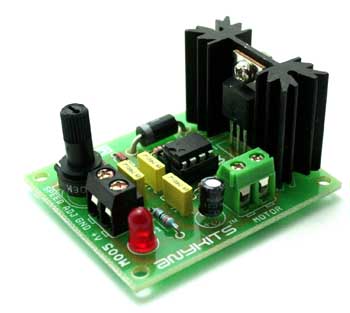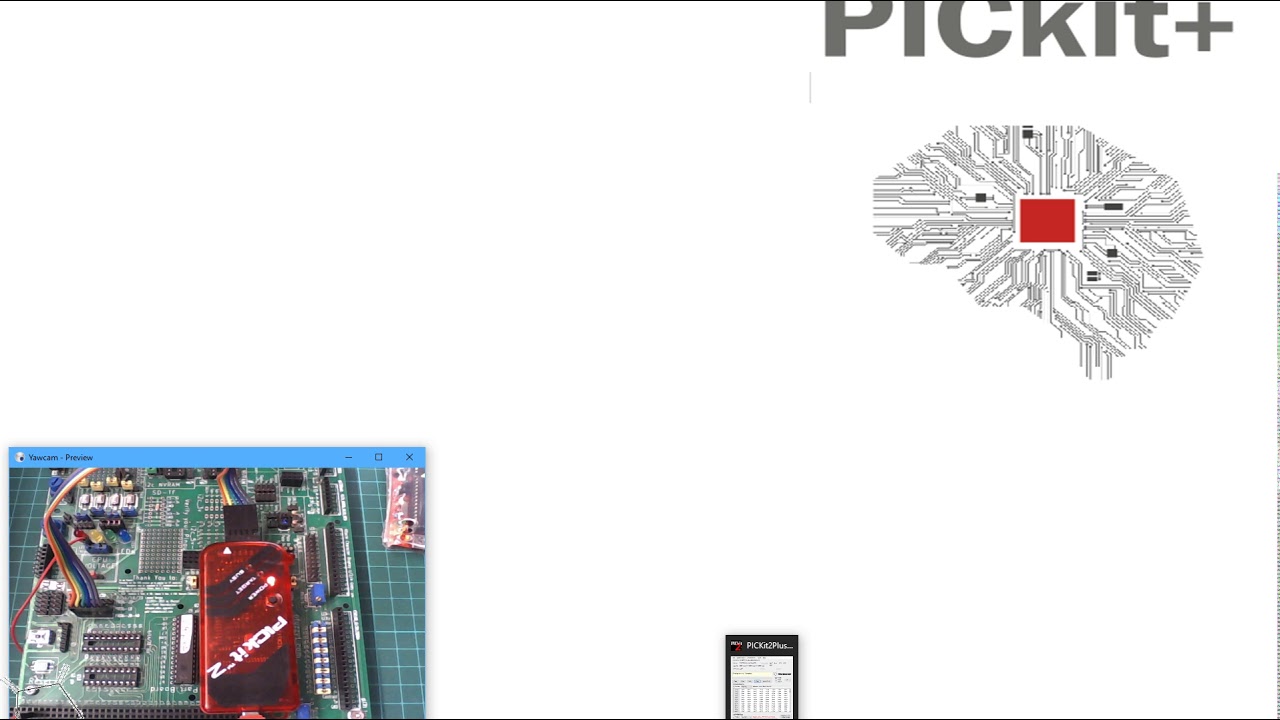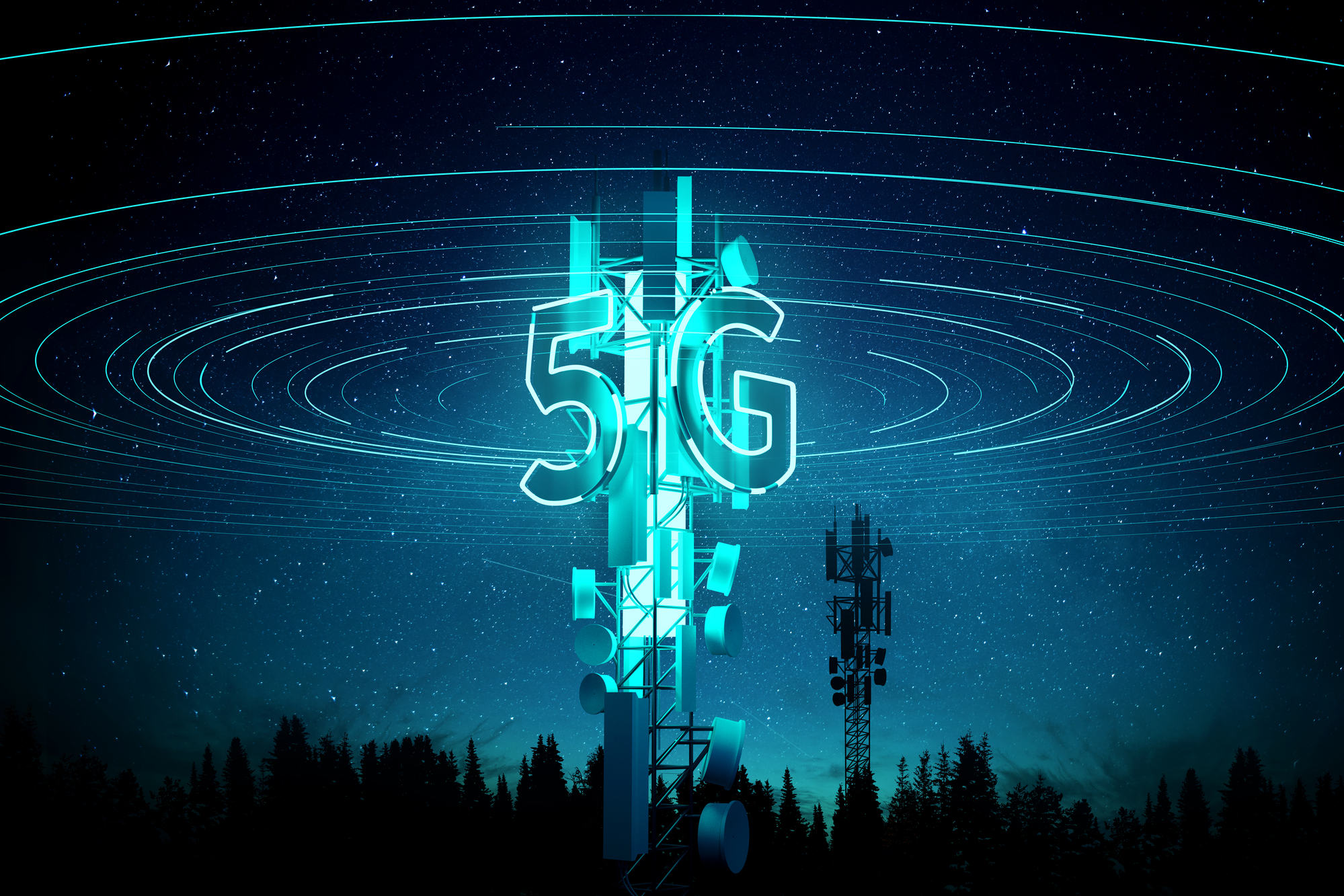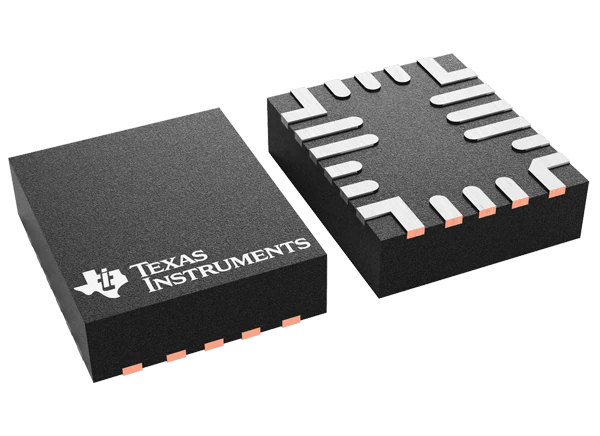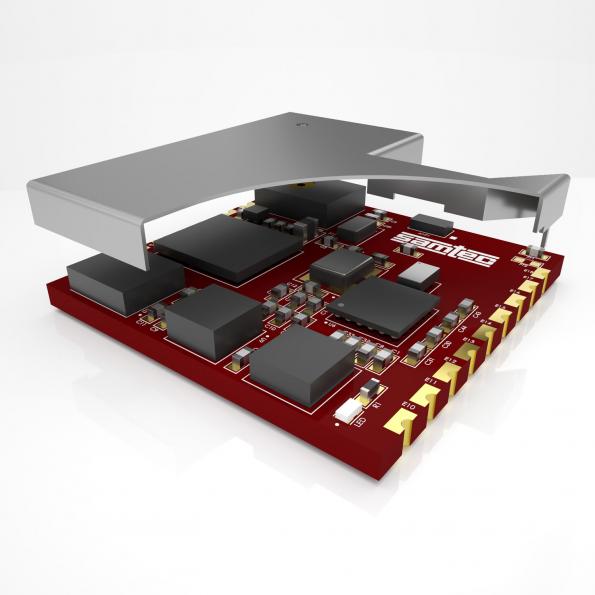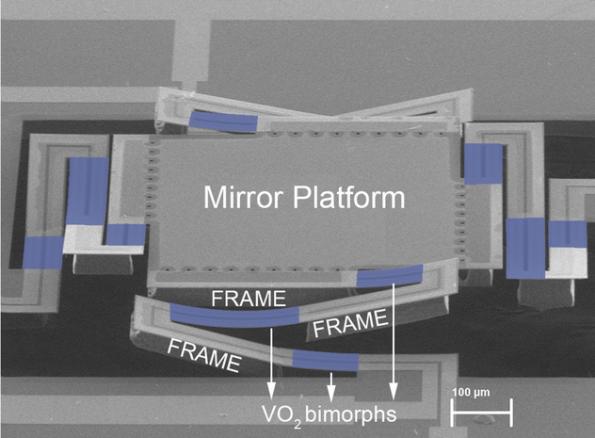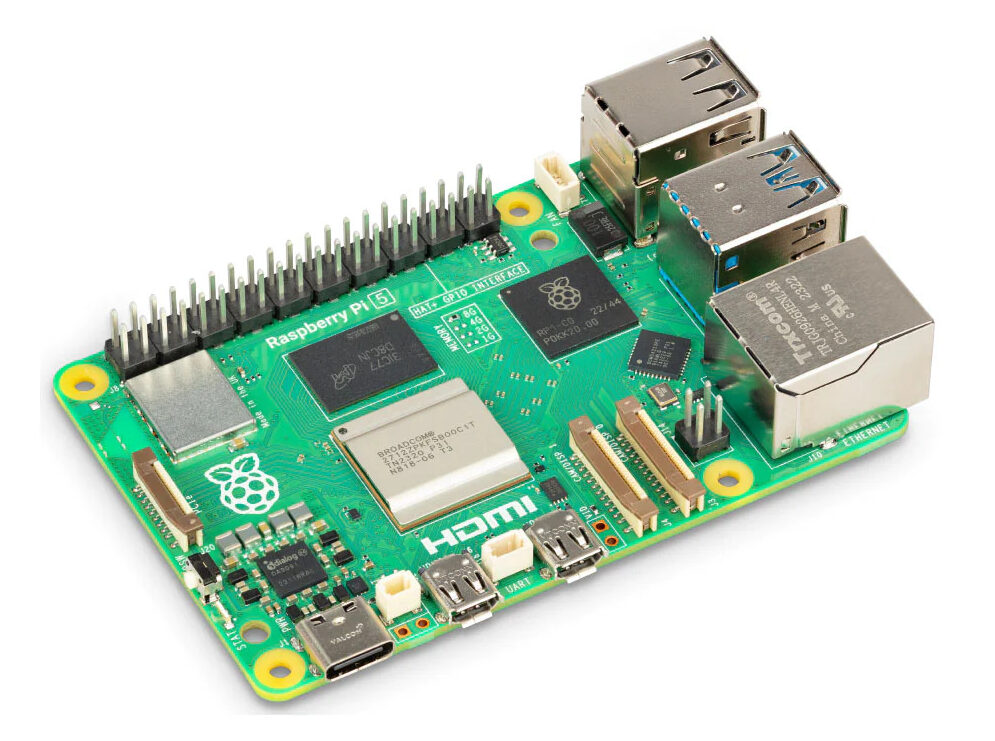
The Raspberry Pi 5 is the newest version of everyone’s favorite tiny and affordable quad-core computer that can fit in your pocket and has the power and performance of a desktop PC.
Raspberry Pi 5 builds on the phenomenal success of Raspberry Pi 4. Featuring a 64-bit quad-core Arm Cortex-A76 processor running at 2.4GHz, Raspberry Pi 5 delivers a 2–3× increase in CPU performance relative to Raspberry Pi 4. Alongside a substantial uplift in graphics performance from an 800MHz VideoCore VII GPU. Other enhancements include improvements to the camera, display, and USB interfacing (Aggregate USB bandwidth is more than doubled). The Raspberry Pi 5 delivers a smoother desktop experience and performance that opens the door to new applications for industrial customers.
These interfacing improvements are delivered by the RP1 I/O controller chip, designed in-house at Raspberry Pi. For the first time, there is Raspberry Pi silicon on a flagship product! The Raspberry Pi 5 is a quad-core computer that can drive 2 x 4k monitors, LPDDR4X-4267 SDRAM, Gigabit Ethernet, with PoE+ support, USB3.0, wireless LAN, Bluetooth 5.0, and more! It has all of the specs and the raw performance normally found on desktop PCs. The Raspberry Pi 5 is currently available in both 4BG & 8GB versions. For the first time, the Pi now features its own onboard on/off switch.
BCM2712 Processor
BCM2712 is a new 16-nanometer application processor (AP) from Broadcom, derived from the 28-nanometer BCM2711 AP which powers Raspberry Pi 4, with numerous architectural enhancements. At its heart is a quad-core 64-bit Arm Cortex-A76 processor, clocked at 2.4GHz, with 512KB per-core L2 caches, and a 2MB shared L3 cache. Cortex-A76 is three microarchitectural generations beyond Cortex-A72, and offers both more instructions per clock (IPC) and lower energy per instruction. The combination of a newer core, a higher clock speed, and a smaller process geometry yields a much faster Raspberry Pi, and one that consumes much less power for a given workload.
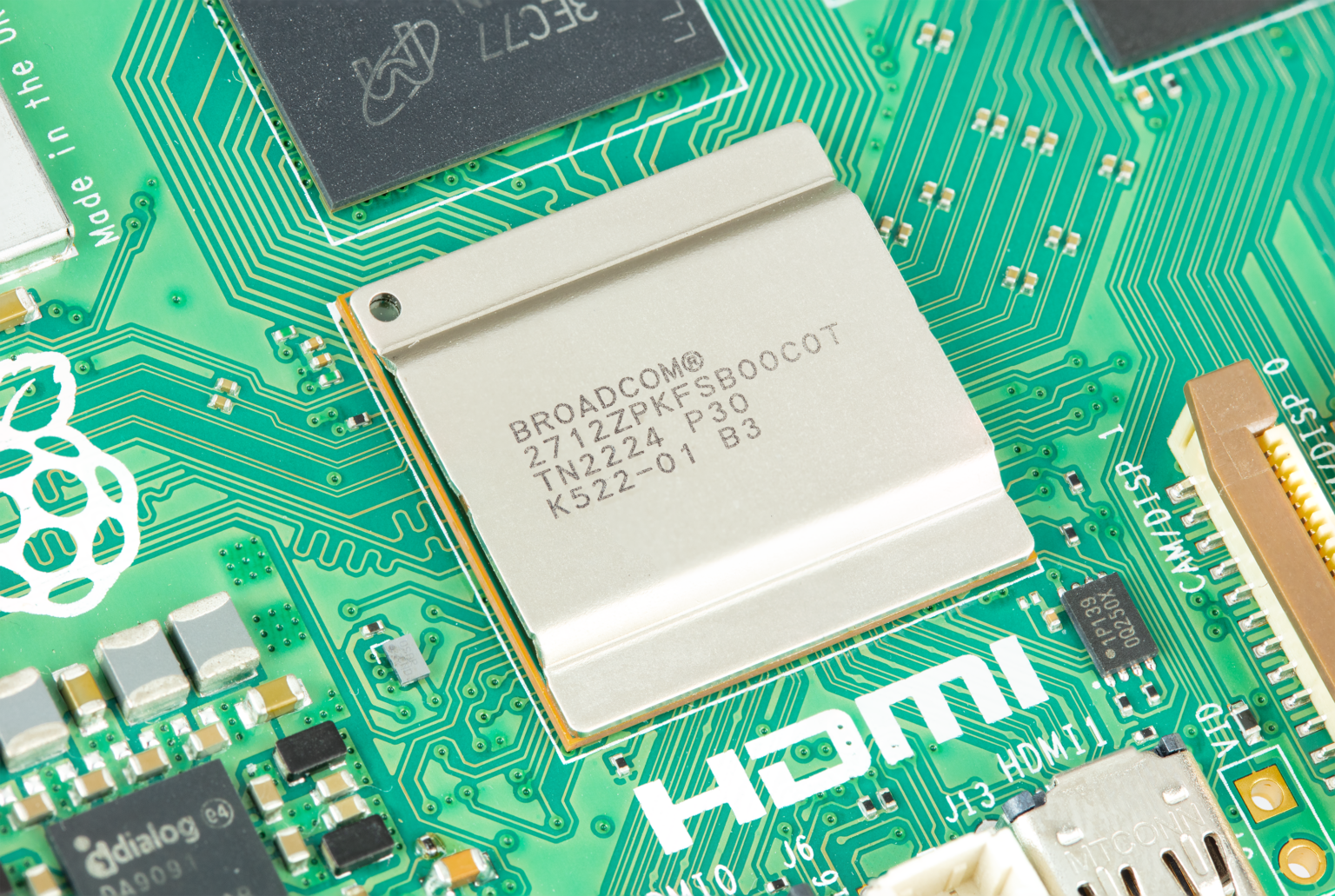
Key features include:
- 2.4GHz quad-core 64-bit Arm Cortex-A76 CPU
- VideoCore VII GPU, supporting OpenGL ES 3.1, Vulkan 1.2
- Dual 4Kp60 HDMI® display output
- 4Kp60 HEVC decoder
- Dual-band 802.11ac Wi-Fi®
- Bluetooth 5.0 / Bluetooth Low Energy (BLE)
- High-speed microSD card interface with SDR104 mode support
- 2 × USB 3.0 ports, supporting simultaneous 5Gbps operation
- 2 × USB 2.0 ports
- Gigabit Ethernet, with PoE+ support (requires separate PoE+ HAT, coming soon)
- 2 × 4-lane MIPI camera/display transceivers
- PCIe 2.0 x1 interface for fast peripherals
- Raspberry Pi standard 40-pin GPIO header
- Real-time clock
- Power button
Features:
- The Raspberry Pi 5 is the latest model of everyone’s favorite single-board computer.
- Pi 5 sees significant upgrades and speed increases (2-3x in CPU performance) over its predecessor, the Raspberry Pi 4 Model B. A full feature comparison can be found here.
- The board is available in both 4GB and 8GB versions.
- A pocket-sized, dual-display, desktop computer, robot brain, smart home hub, media center, networked AI core, factory controller, NAS, and much more.
- It offers performance that rivals entry-level PCs at a fraction of the cost.
- Drop it straight into your old projects, it’s the same general size and shape as its predecessors and it features the same backward-compatible GPIO interface as its predecessors.
- The fanless, energy-efficient Raspberry Pi runs silently and uses far less power than other computers.
- It offers the perfect platform for learning/teaching; coding, Linux, IoT systems, streaming media, playing games, automated domestic and industrial applications, or your complete desktop solution and much much more.
- It is the first time the flagship product has features Raspberry Pi silicon, the RP1 I/O controller chip has been designed in-house at Raspberry Pi HQ.
- Raspberry Pi 5 builds on the phenomenal success of Raspberry Pi 4. In comparison with its predecessor, it delivers a 2-3x increase in CPU performance, and a significant uplift in GPU performance, alongside improvements to camera, display, and USB interfacing.
- Each board will include a marking on the upper side of the PCB to identify what memory density is fitted to a specific board.
- All boards now carry a unique serial number on the PCB.
- Raspberry Pi 5 will remain in production until at least January 2035.
- The Raspberry Pi 5 tech specs are;
- CPU: 2.4GHz quad-core, 64-bit Arm Cortex-A76, with 512KB L2 cache and a 2MB shared L3 cache.
- GPU: 800MHz VideoCore VII GPU supporting OpenGL ES 3.1, Vulkan 1.2.
- RAM: LPDDR4X-4267 SDRAM (4GB or 8GB).
- WiFi: Dual band 2.4 GHz and 5.0 GHz 802.11ac Wi-Fi.
- Bluetooth: Bluetooth 5.0 / Bluetooth Low Energy (BLE).
- Storage: Micro SD card slot, with support for high-speed SDR104 mode.
- USB 3.0: 2 x USB 3.0 ports, supporting simultaneous 5Gbps operation.
- USB 2.0: 2 x USB 3.0 ports.
- Ethernet: Gigabit Ethernet, with PoE+ support (requires PoE+ HAT).
- HDMI: 2 x micro-HDMI® ports (up to 4kp60 supported) HEVC decoder and HDR support.
- DSI/CSI: 2 × 4 lane MIPI camera/display transceivers (3x bandwidth improvement).
- PCle: PCIe 2.0 x1 interface for fast peripherals (requires separate M.2 HAT or other adapter).
- Power: 5V/5A DC power via USB-C, with Power Delivery support.
- GPIO: Raspberry Pi standard 40-pin header (Backwards compatible).
- RTC: Real-Time Clock (RTC), powered by an external battery.
- On/Off Switch: On-board power button!!
The Pi 5 is fitted with a new 2.4GHz quad-core, 64-bit Arm Cortex-A76, with 512KB L2 cache and a 2MB shared L3 cache. This provides a 2-3x speed increase over the previous model. The impressive array of technical specifications enables the Raspberry Pi 5 to become a powerful desktop solution, capable of handling your daily computing needs. It doesn’t just stop at the desktop, it also has all of the power needed for other computing applications such; as a web server, media server, NAS, console emulator, and more.
The new Pi offers the perfect coding environment for all ability levels and there are plenty of guides online for any project you can imagine. The onboard connectivity; Wi-Fi, USB2.0/3.0, Gigabit Ethernet, and Bluetooth give you all of the networking options you could possibly want. The 40-pin GPIO connectors mean that you can expand the board via HATs and connect a whole array of extra devices. The twin 4k display option means that you can have everything open at once without any tab/window dancing.
The Raspberry Pi 5 is 100% ready for education, it offers the perfect platform for learning and teaching; coding, Linux, IoT systems, streaming media, playing games, automated domestic and industrial applications, a complete desktop solution, and much much more.
Resources:
- Discover a whole range of projects for your Raspberry Pi
- Read more detailed documentation on configuring your Raspberry Pi
- Find out about accessing your Raspberry Pi remotely





